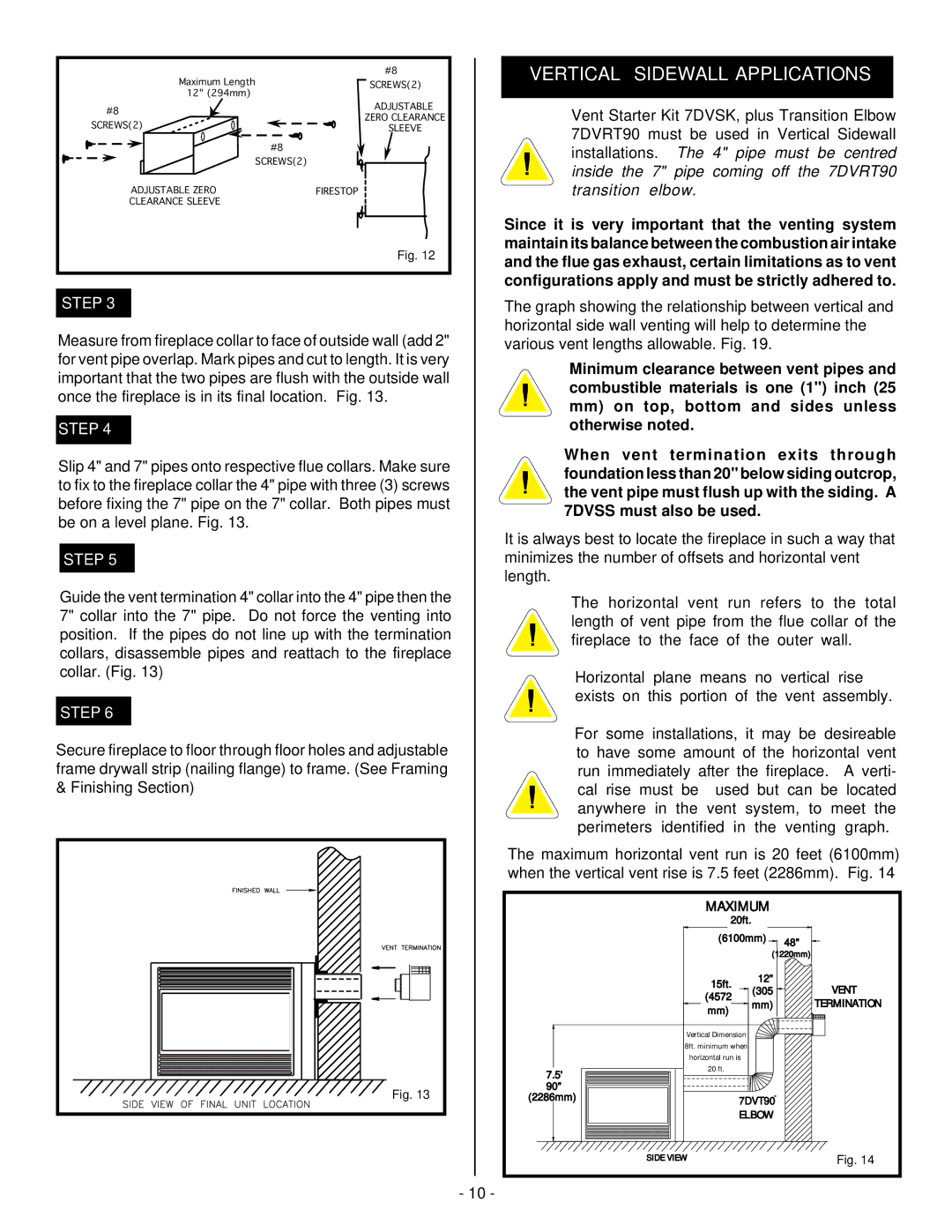DVRSL, DVRSR, DVRS3 specifications
Vermont Castings has been a trusted name in the manufacturing of high-quality wood and gas stoves and fireplaces for decades. Among their extensive lineup of gas-burning appliances, the DVRS3, DVRSR, and DVRSL models stand out for their impressive combination of efficiency, aesthetic appeal, and user-friendly features. These models exemplify Vermont Castings' commitment to craftsmanship, innovation, and environmental responsibility.The DVRS3 is a powerful direct vent gas stove that offers cozy warmth to any living space. It features a large firebox capable of accommodating different log options and provides a maximum input of up to 30,000 BTUs. One key feature of the DVRS3 is its advanced heat exchange system, which enhances heat distribution and efficiency, ensuring that more of the heat generated is released into the room rather than lost through the chimney. Additionally, the stove is designed with a full-width cast iron door and large ceramic glass window, providing an unobstructed view of the flames for a captivating ambiance.
The DVRSR model brings similar qualities but with a more contemporary design. This direct vent stove is engineered to fit seamlessly into modern homes while delivering efficient heating. With a maximum output of up to 25,000 BTUs, it maintains an eco-friendly approach, having been certified for low emissions. The DVRSR also comes equipped with various customization options, including different finishes and decorative options, allowing homeowners to match their stove with their interior design.
For those looking for a space-saving alternative without sacrificing performance, the DVRSL model is ideal. This slim-profile direct vent gas stove is designed to fit in tighter spaces while still offering impressive heating capabilities. With a maximum BTU output of 30,000, the DVRSL is packed with features such as an easy-to-use electronic ignition and remote control capability, allowing users to adjust the flame height and temperature settings with ease.
Each of these models is equipped with Vermont Castings' signature technology that promotes safety, efficiency, and reliability. From built-in safety shut-off systems to durable materials that withstand the test of time, the DVRS3, DVRSR, and DVRSL models are designed to provide years of dependable service. Whether you value traditional aesthetics or modern design, Vermont Castings has engineered these gas stoves to meet the diverse needs of today’s homeowners, combining style, functionality, and peace of mind in each product.

